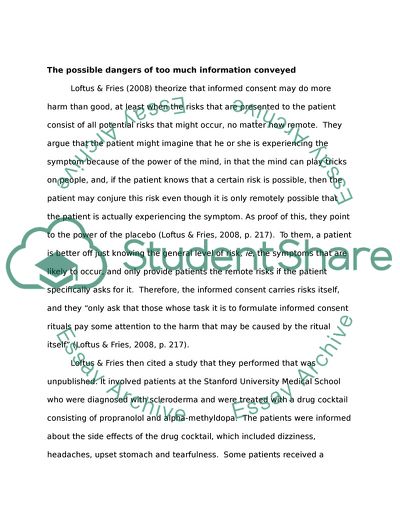Cite this document
(The Possible Dangers of Too Much Information Conveyed Literature review Example | Topics and Well Written Essays - 2250 words, n.d.)
The Possible Dangers of Too Much Information Conveyed Literature review Example | Topics and Well Written Essays - 2250 words. https://studentshare.org/education/1754106-what-research-exists-to-support-the-efficacy-of-the-informed-consent-process
The Possible Dangers of Too Much Information Conveyed Literature review Example | Topics and Well Written Essays - 2250 words. https://studentshare.org/education/1754106-what-research-exists-to-support-the-efficacy-of-the-informed-consent-process
(The Possible Dangers of Too Much Information Conveyed Literature Review Example | Topics and Well Written Essays - 2250 Words)
The Possible Dangers of Too Much Information Conveyed Literature Review Example | Topics and Well Written Essays - 2250 Words. https://studentshare.org/education/1754106-what-research-exists-to-support-the-efficacy-of-the-informed-consent-process.
The Possible Dangers of Too Much Information Conveyed Literature Review Example | Topics and Well Written Essays - 2250 Words. https://studentshare.org/education/1754106-what-research-exists-to-support-the-efficacy-of-the-informed-consent-process.
“The Possible Dangers of Too Much Information Conveyed Literature Review Example | Topics and Well Written Essays - 2250 Words”. https://studentshare.org/education/1754106-what-research-exists-to-support-the-efficacy-of-the-informed-consent-process.


